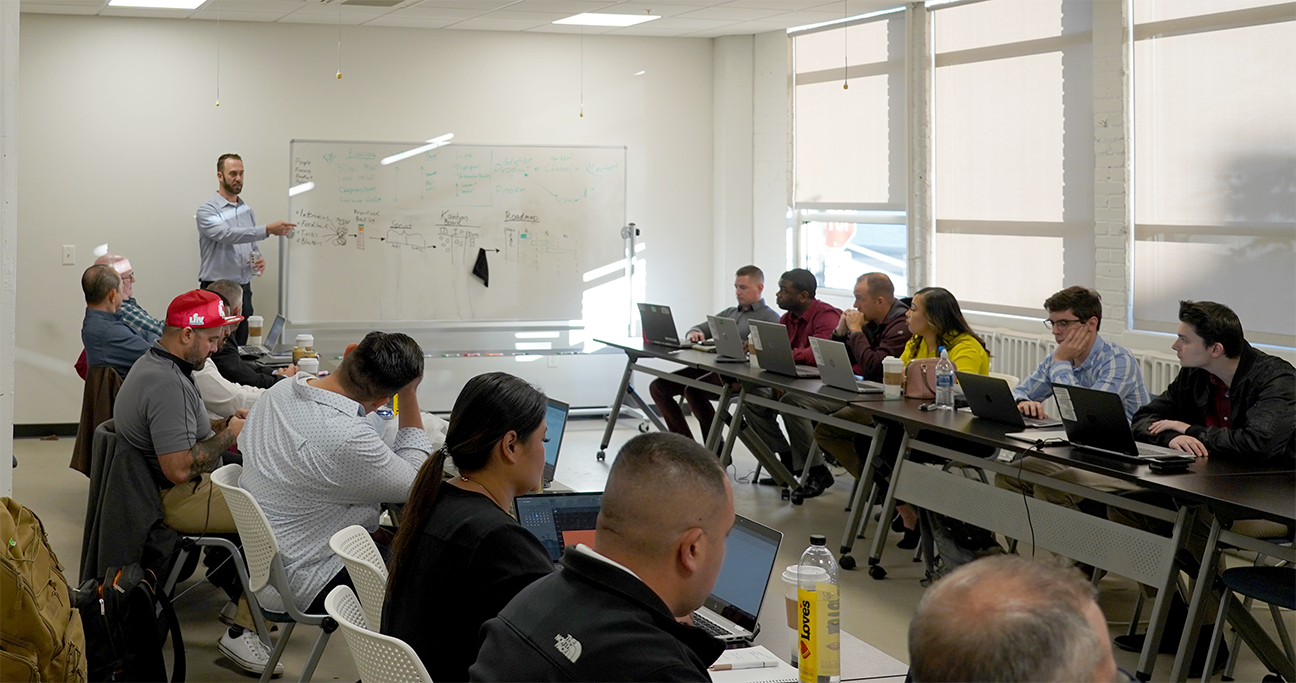Editor’s note: This is part two of a three-part series about the AFWERX Refinery program. Part one provided general information and a basic introduction to the Refinery. Part two (below) focuses on how the Refinery addresses the Chief of Staff of the Air Force’s Action Orders as well as the Secretary of the Air Force’s Operational Imperatives, and part three will highlight specific Refinery projects and success stories.
WRIGHT-PATTERSON AIR FORCE BASE, Ohio (AFRL) — The Refinery program, an initiative of AFWERX’s Spark division, is addressing the Chief of Staff of the Air Force’s, or CSAF’s, Action Orders and the Secretary of the Air Force’s, or SECAF’s, Operational Imperatives, or OIs, as it works to rapidly advance the projects of Airmen and Guardians. The principal objective of this four-week, hybrid innovation Accelerator program is to target grassroots efforts and further develop tactical project prototypes that directly aid warfighters and ultimately adopt the right operational capabilities into the larger force.
“We are taking a deliberate approach with AFWERX 3.0 to single out opportunities for innovation that are most applicable to OIs and Action Orders,” said Col. Elliott Leigh, director of AFWERX.

Airmen and Guardians of Refinery cohort 6 gather in Dayton, Ohio, November 9, 2022 to workshop their projects. The AFWERX Refinery four-week accelerator program’s principal objective is to target grassroots efforts and further develop tactical project prototypes that directly aid warfighters and ultimately adopt the right operational capabilities into the larger force. (U.S. Air Force photo / Michael Madero)
The Action Orders represent CSAF’s call to accelerate change and were updated in February 2022 to detail what the force must do in four focus areas – Action Order A: Airmen; Action Order B: Bureaucracy; Action Order C: Competition; and Action Order D: Design Implementation – in order for the U.S. to remain the most dominant and respected Air Force in the world.
The Refinery assists Airmen in making a meaningful impact on the force and sharpening the nation’s competitive advantage, addressing Action Order A.
Maj. Loren Faire of Morpheus, an innovation team under the Vice Chief of Staff of the Air Force Gen. David W. Allvin, has been assigned to the Refinery program to focus on maturation and sustained integration. Regarding Action Order B, Bureaucracy, Faire said the Refinery framework helps to bridge gaps where there were once bureaucratic blockades, encouraging offices to seriously consider or even adopt wholesale the ideas and solutions that these Airmen and Guardians have developed, thus altering the current culture and practices which prevent timely and effective decisions.
The Refinery clearly addresses the action order regarding competition since each project has the potential to save thousands of manpower hours, allowing Airmen and Guardians to focus on higher-order tasks. This might be accomplished through helping servicing jets faster with improved maintenance techniques or integrating a communication system where connectivity is limited. Each diverse project that moves through the Refinery’s accelerator program can increase the competitive edge of the U.S.
Lastly, the Refinery caters to Action Order D, Design Implementation, by helping headquarters connect with the teams executing missions. For example, a recent software program by Brett Sheffer called LINKS (Learning Integration Network Knowledge System) completed the Refinery process with 16,000 hours of use and experience, making it a strong candidate for integration into the larger force.
In addition to the CSAF’s Action Orders, SECAF Frank Kendall’s OIs are the critical operational capabilities and functions the Department of the Air Force must invest in to protect the U.S.’ ability to deter conflict and project power against pacing challenges. The AFWERX Refinery program’s process and resulting capabilities have been designed to both directly and indirectly support each of these OIs. Notably, Faire called out the Refinery team’s focus on targeting OIs 5 and 7, working with Airmen and Guardians to ensure they have the resources and readiness for an agile and modern environment.
“This is the next iteration of taking ideas from both our Airmen and our Guardians, and in the near future our top performers in the SBIR portfolio,” said Col. Martin Salinas, division chief, AFWERX Spark. “We are deliberately curating the team leading the innovation to ensure we are supporting the innovation, as well as discovering and removing roadblocks to transition to assist seamless adoption.”
Stay tuned for part three of this series, which will spotlight several successfully-transitioned Refinery projects. To learn more and submit project ideas to the Refinery, visit: https://afwerx.com/refinery/.
About AFRL
The Air Force Research Laboratory, or AFRL, is the primary scientific research and development center for the Department of the Air Force. AFRL plays an integral role in leading the discovery, development and integration of affordable warfighting technologies for our air, space and cyberspace force. With a workforce of more than 11,500 across nine technology areas and 40 other operations across the globe, AFRL provides a diverse portfolio of science and technology ranging from fundamental to advanced research and technology development. For more information, visit: www.afresearchlab.com.
About AFWERX
AFWERX is an Air Force Research Laboratory Directorate that connects innovators across government, industry and academia. Through innovation and collaboration with our nation’s top subject-matter experts, AFWERX harnesses the power of ingenuity of internal talent while expanding technology, talent and transition partnerships for rapid and affordable commercial and military capability. Additional information is available at: https://www.afwerx.com/.
About Spark
Spark connects Airman and Guardians to commercial innovators using virtual collaboration, immersive training and networking opportunities to inspire ideas and cultivate a more creative force. By connecting operators closer to acquisition processes, Spark provides both a voice and a conduit to turn powerful ideas into game-changing operational realities. Additional information is available at: https://afwerx.com/spark_/.

